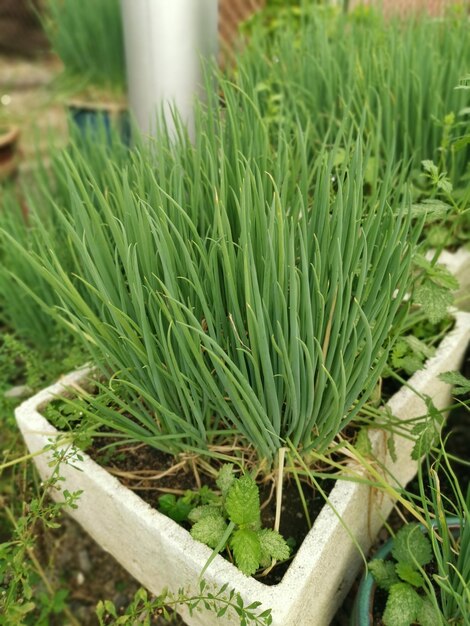Onion thrips (Thrips tabaci) are tiny pests that can wreak havoc on your chives and other allium crops. Early detection is crucial for effective management and preventing severe damage. Here are ten early signs that your chives may have fallen victim to these unwanted guests.
1. Discoloration of Leaves
One of the first signs of onion thrips infestation is the discoloration of chive leaves. You may notice yellow or silver streaks along the leaf surface. This discoloration is often a result of the thrips feeding on the plant tissues.
2. Leaf Curling
Infested chives may exhibit curling or twisting of the leaves. As the thrips feed, they can cause the leaf structure to become distorted, leading to an abnormal growth pattern.
3. Stunted Growth
If your chives are not growing as robustly as expected, it could be a sign of thrips damage. These pests weaken the plants, hindering their ability to absorb nutrients and water effectively.
4. Silvery Specks
Check the leaves for tiny silvery specks or spots, which are indicative of thrips feeding damage. These spots are often more visible on the upper leaf surface, where thrips typically reside.
5. Black Feces
Look for tiny black specks on the leaves or surrounding soil. These are the excrement of thrips and can be a clear sign of their presence.
6. Sticky Residue
A sticky substance, known as honeydew, may appear on the leaves or nearby surfaces. This is produced by thrips as they feed and can attract other pests like ants.
7. Webbing or Fine Silk
While thrips do not produce webs like spider mites, they may leave behind fine silk threads. If you notice these threads on your chives, it could indicate a thrips infestation.
8. Reduced Flavor and Aroma
Thrips feeding can impact the flavor and aroma of chives. If your chives taste bland or less aromatic than usual, it may be due to the stress caused by these pests.
9. Visible Thrips
If you closely inspect your chives, you may spot the thrips themselves. They are tiny, elongated insects that can range from yellow to brown. Use a magnifying glass for a better view, especially on the undersides of leaves.
10. Presence of Other Pests
The presence of ants or other pests around your chives can be a sign of thrips. Ants are often attracted to the honeydew produced by thrips, indicating a potential infestation.
Detecting onion thrips early is essential to protect your chives and ensure their health and productivity. Regularly inspect your plants for these signs, and if you notice any issues, consider implementing integrated pest management strategies. This can include introducing beneficial insects, using insecticidal soap, or applying neem oil to help control thrips populations. By taking proactive measures, you can keep your chives thriving and delicious.
Join 'Farmers Mag' WhatsApp Channel
Get the latest Farming news and tips delivered straight to your WhatsApp
CLICK HERE TO JOIN






